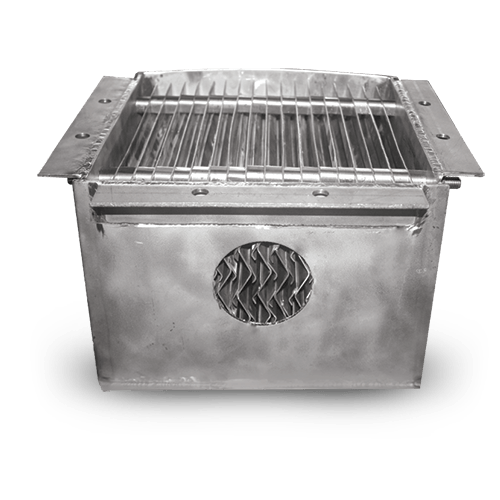Panta Vane™ Mist Eliminator consists of a series of specially profiled baffles that removes liquid droplets from vapor stream by the inertial impaction of the droplets on the baffles. The liquid droplets carry over with vapor which has been crossing vane zigzag do not intend to change direction, so collide to lates and forming larger droplets which trickle downward to the liquid in the bottom of separator drum.
- Simple vertical flow vane (VC0 Series)
- Single pocket horizontal flow vane (HZ1 Series)
- Double pocket horizontal flow vane (HZ2 Series)
Specifications of some popular types of mesh pads which are used in most processes are listed in the below table:
| Panta Vane™ Type | Drainage Channel | Vane Pitch | Fouling Resistance | |
| VC0-225 | None | 25 | Good |  VC0 VC0 |
| VC0-325 | None | 25 | Good | |
| VC0-425 | None | 25 | Good | |
| HZ1-225 | Open | 25 | Reasonable | |
| HZ1-325 | Open | 25 | Reasonable |  HZ1 HZ1 |
| HZ1-425 | Open | 25 | Reasonable | |
| HZ1-220 | Open | 20 | Reasonable | |
| HZ1-320 | Open | 20 | Reasonable | |
| HZ1-420 | Open | 20 | Reasonable |  HZ2 HZ2 |
| HZ2-220 | Enclosed | 20 | Avoid | |
| HZ2-320 | Enclosed | 20 | Avoid | |
| HZ2-420 | Enclosed | 20 | Avoid |
Droplet removal is by inertial impaction. When the gas is forced to change direction negotiating narrow passages formed by the shape of the vanes, larger liquid droplets will tend to continue in a straight line and coalesce on the vane surface that blocks their path. Smaller droplets however will tend to follow the gas around the corner. The degree of removal of any droplet size can be calculated based on centrifugal forces and Stokes Law.
In general droplet removal efficiency increases with:- Increasing Gas Velocity
- Increasing Gas and Liquid density difference
- Decreasing Gas Viscosity
- Increasing Vane Angle
- Decreasing Vane Pitch
